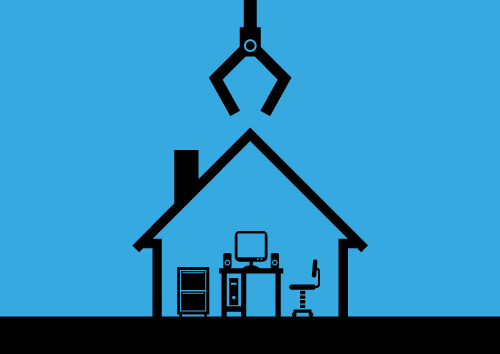
When Yahoo!’s Marissa Mayer recently sent a memo to employees announcing that flexible working practices would be stopped and all home workers were due to report back to the office it created much furor. A supposedly progressive company – and a tech one at that – banning remote workers? From many quarters this prompted a level of surprise, and from others tacit agreement. The press has since been awash with articles and the message boards have been lively. And it’s not just the press, it seems anywhere you go employees and managers alike have strong opinions.
Richard Branson was one of the first high profile figures to wade in on the debate. He suggested that in this day and age, mandatory office hours for all workers was a sign of ‘old school thinking’. In an age when remote working is easier and more effective than ever, he said the decision seemed like a backwards step.
Vodafone came out soon after and publicly declared a ‘fight back’ against Yahoo!’s home working ban. Vodafone says that the practice encourages smarter, more cost-effective ways of working and they have figures to back it up. According to a recent study undertaken by Vodafone, British business can save up to £34bn a year by freeing up desk space and reducing overhead costs when workers aren’t present in the office.
While the figures are indeed impressive, I imagine what’s going on at Yahoo! isn’t really about saving money. According to Mayer the ban at Yahoo! was taken to foster greater ‘communication and collaboration’ between employees. The idea being that important conversations and creative thinking occurred around the water cooler and during casual conversation over lunch or informal meetings when staff are together. If staff are not in the same place, it becomes more tricky to create the kind of environment where this can happen easily.
According to Richard Branson however, to successfully work with other people you have to trust each other. And a big part of this is trusting people to get their work done wherever they are, without supervision.
Trust of course is a big part of the wider debate. According to Vodafone, a quarter in the survey worried that flexible working would lead to workers abusing the system. Trust or a lack of trust, sparking creativity by working in close proximity or the freedom to think, create and work from wherever you are – whatever side of the fence you’re on, unsurprisingly, it’s not so cut and dry.
At DAV we have worked with companies of all sizes across many different industries - from small, close knit groups to large, geographically dispersed organisations with teams working together across different countries and time zones. Each structure had its own challenges, strengths and weaknesses.
Technology is a great enabler but above all what really matters is how you use it and to what end that makes a difference. Clearly certain roles are more suited to the office environment and others benefit from on the road or at home access. And it is impossible to say that everyone working together from an office is more efficient and productive than those working on the road or at home. Some aspects of some roles definitely call for more flexibility of location at different times, depending on the task in hand.
The reality is that work patterns are changing and technology has enabled the world to be increasingly connected. 9-5 is a thing of the past with technology now supporting 24/7 business operation. For a business like ours, the very nature of the work we undertake means our people are often widely dispersed for many months at a time. They therefore need to be strong independent thinkers and self-contained team players who can function in any type of environment. We trust them to be in the right place at the right time, working in a collaborative environment when that is what’s called for or perhaps remotely when they need the time to think and reflect.
One thing is for sure, when you are working to deliver a large and complex business change programme, good leadership is key. And to perform at this level you have to be in and around your team for a good deal of the time. It’s about having the judgment and flexibility to be where you need to be, when you need to be, in order to get the job done.
Whether or not Yahoo! got it right remains to be seen. Generally however, the move to more flexible, work at home scenarios is on the increase. With the promise of substantial cost savings and greater employee satisfaction, especially in those markets where attracting and retaining talent is difficult, remote working has its definite advantages. However, for others it may not be such a great fit. Ultimately, success will be dependent on how a business goes about managing its team environment to create a productive remote and distributed workforce that will make the difference between success and failure.













